Landmarks in Egypt: Exploring Ancient Wonders of the Nile
Welcome to the mesmerizing land of Egypt, where time has etched its story in stone. This article takes you on an enchanting journey through landmarks in Egypt, uncovering the majestic wonders that have stood the test of time. Each landmark reveals a fascinating chapter of Egypt’s ancient history and enthralling culture, from the iconic Pyramids of Giza to the mystical Valley of the Kings.
Book your Egypt Vacation Packages now!
The Pyramids of Giza: The most famous landmarks in Egypt
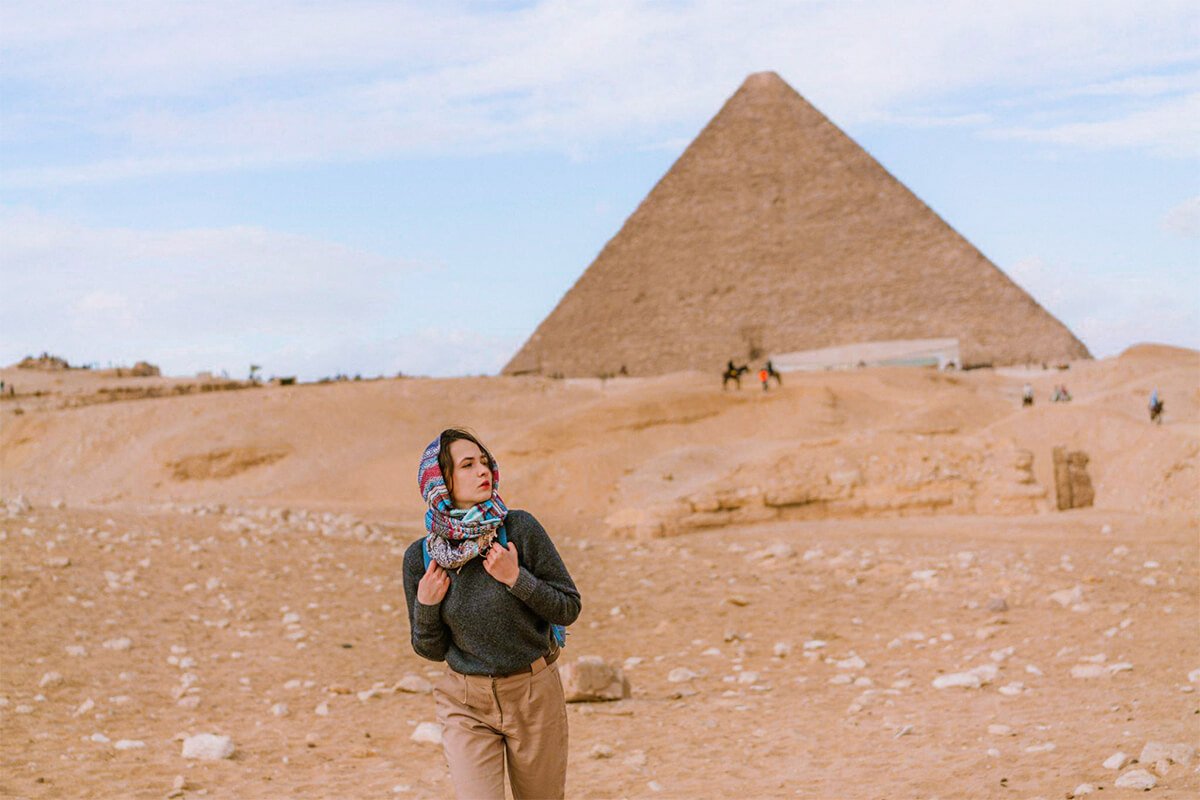
Historical Significance and Construction
The Pyramids of Giza, without a doubt, are among the world’s most iconic landmarks in Egypt, evoking a sense of awe and wonder. These architectural marvels were constructed over 4,500 years ago during the Fourth Dynasty of the Old Kingdom of Egypt, serving as monumental tombs for Pharaohs. The sheer engineering genius of their construction continues to baffle historians and archaeologists.
The Great Pyramid, or Pyramid of Khufu, is the largest and took approximately 20 years to build. It comprises an estimated 2.3 million stone blocks, each weighing several tons. The precision in their alignment is remarkable, and theories about how these massive stones were moved and placed remain subjects of fascination and debate.
Visitor Experience and Accessibility
Visiting the Pyramids is a dream come true for many travelers. The good news is that they are easily accessible from Cairo, and a visit can be a half-day excursion from the city. The Pyramids are open to the public, and you can explore the Great Pyramid and the Pyramid of Khafre, as well as the Pyramid of Menkaure. It’s an immersive experience that allows you to step back in time and marvel at the grandeur of ancient Egypt.
You can also venture inside the pyramids to explore the chambers, giving you a deeper sense of their purpose and the craftsmanship that went into their construction. The site offers camel and horseback rides for those who want to add more adventure to their visit.
Must-See Attractions Around the Pyramids
While the Pyramids are the main attraction, the surrounding area offers plenty to explore. With its enigmatic aura, the Great Sphinx of Giza stands guard nearby. The Solar Boat Museum showcases a reconstructed ancient Egyptian boat, and the panorama point provides a breathtaking view of all three pyramids.
Explore the Pyramids Sound and Light Show if you can; it’s a captivating experience that tells the story of the ancient pharaohs and their significance through a dazzling display of lights and sound.
Don’t miss checking out our article:
Experience Easter in Egypt – a unique and cultural journey awaits.
Explore Egypt Travel Tips to make the most of your trip.
The Sphinx: Guardian of the Pyramids
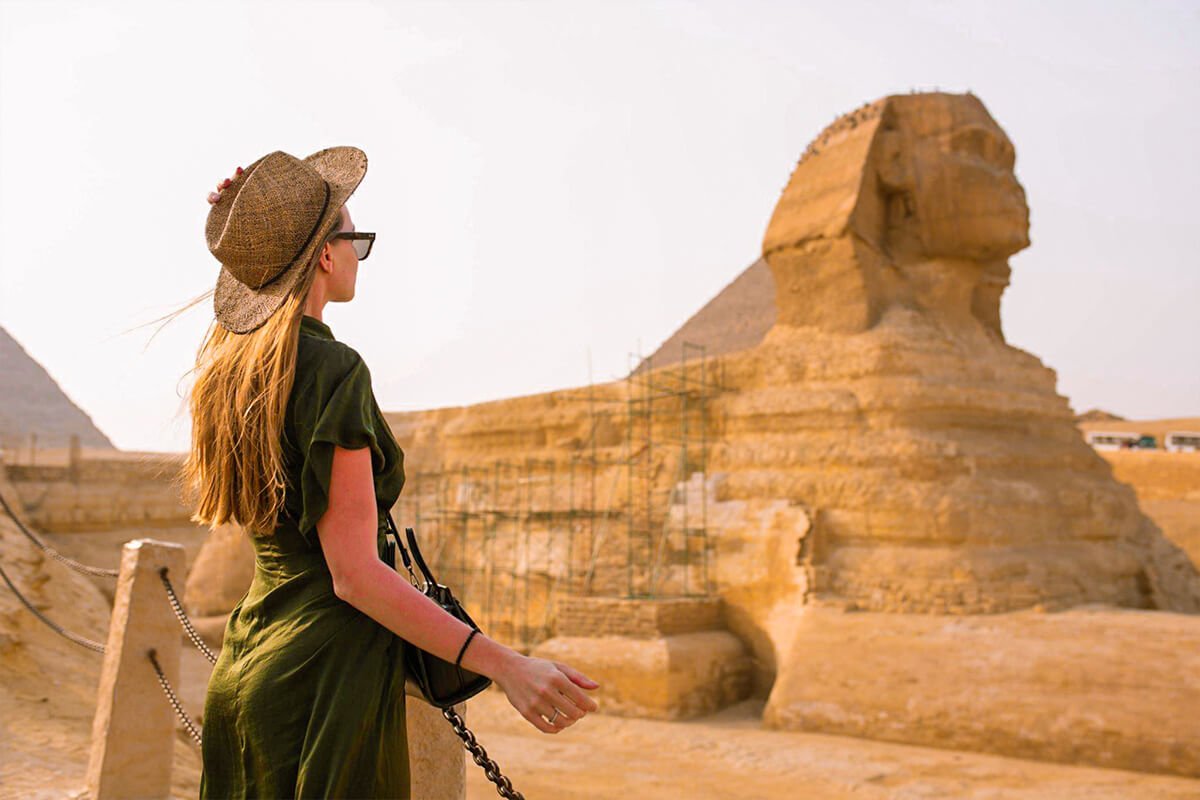
History and Symbolism of the Sphinx
With its lion’s body and human head, the enigmatic Sphinx holds a special place in Egypt’s history and culture. This colossal statue, standing tall by the Pyramids of Giza, is thought to represent Pharaoh Khafre, who is also linked to one of the pyramids.
The Sphinx is more than a mystical figure; it embodies ancient Egypt’s rich symbolism. Its lion body signifies strength, while the human face is believed to represent intelligence. This powerful combination of attributes reflects the qualities ancient Egyptians admired in their leaders. Over time, the Sphinx has also become a symbol of protection, guarding the sacred pyramids and the land beyond.
Detailed Description of the Sphinx
When you get close to the Sphinx, you’ll be astounded by its size. It’s around 66 feet high, 240 feet long, and made of solid limestone. Though eroded over centuries, the head still bears traces of its original red paint. The entire monument is a testament to ancient Egypt’s architectural prowess.
While you won’t be able to get up close and touch the Sphinx (protective barriers are in place to preserve it), you can get an excellent view from various vantage points around the Giza plateau. The Sphinx’s immense presence and mysteries make it a must-see for anyone visiting the Pyramids.
Visitor Tips for the Best Experience
To make the most of your visit to the Sphinx, consider going early in the morning or late in the afternoon when the weather is milder and the crowds are thinner. Comfortable walking shoes, a hat, and sunscreen are advisable, as the Giza plateau can get scorching. Tour guides are available and recommended, as they can provide you with insightful information about the Sphinx’s history and significance.
The Valley of the Kings: Ancient Egyptian Burial Ground
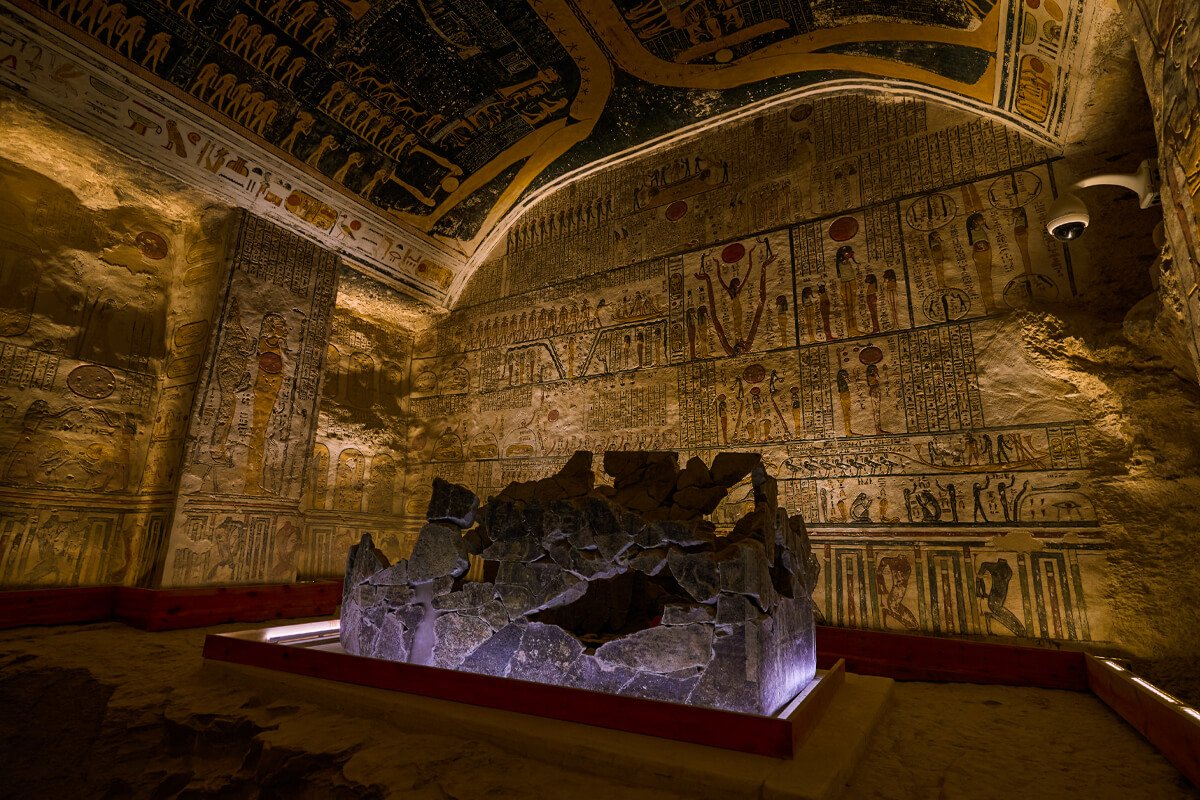
Overview of the Valley’s Historical Importance
The Valley of the Kings, located on the west bank of the Nile near Luxor, holds profound historical significance. It served as the final resting place for numerous pharaohs of the New Kingdom era, spanning from the 16th to the 11th centuries BC.
These pharaohs, including the famous Tutankhamun, chose this site for their tombs because of its strategic location and the geological formation of the cliffs, which provided a natural barrier against tomb robbers. The valley’s historical importance lies in the incredible wealth of archaeological and historical information it has yielded.
The well-preserved tombs contain elaborate wall paintings, hieroglyphics, and treasures, shedding light on ancient Egyptian beliefs, art, and customs.
Highlighted Tombs and Their Significance
While there are over 60 tombs in the Valley of the Kings, a few stand out for their historical and archaeological significance; the tomb of Tutankhamun, known as KV62, is undoubtedly the most famous. Discovered in 1922 by Howard Carter, it contained an astounding array of treasures, including the favorite golden death mask. It’s a testament to the craftsmanship and artistry of the time.
The tomb of Ramses II, KV7, is another notable site. Ramses II was one of the most prolific pharaohs in Egyptian history, and his grave offers a glimpse into the grandeur and ambition of his reign. The tomb of Seti I, KV17, is renowned for its intricate decorations and the depth of its chambers. Each grave has unique charm and historical value, and visiting the Valley of the Kings is an enriching experience.
Join us for adventure and discovery on our Egypt Day Tours.
Karnak Temple: One of the most famous landmarks in Egypt in Luxor
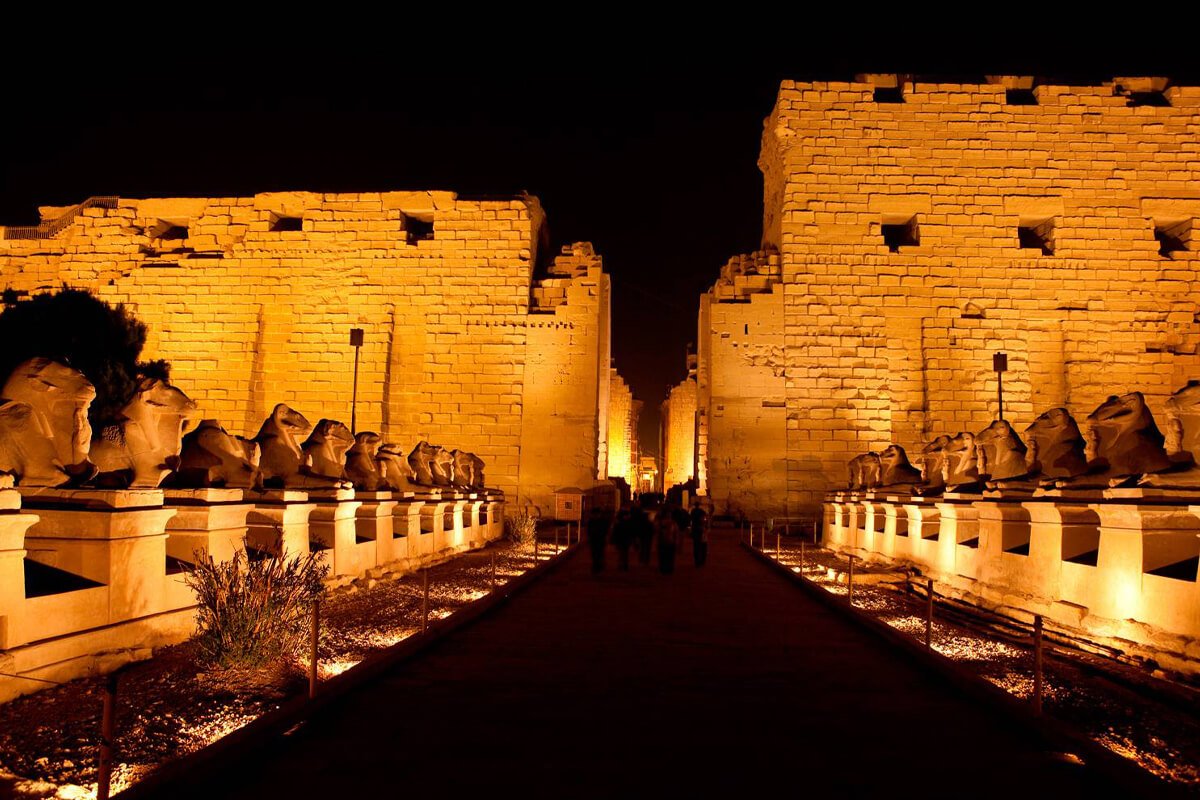
Introduction to Karnak Temple’s Grandeur
Karnak Temple, nestled in the heart of Luxor, is a colossal and awe-inspiring complex that stands as one of ancient Egypt’s most magnificent architectural achievements.
This sprawling temple, dedicated primarily to the god Amun, was constructed and expanded over 2,000 years. Its sheer scale and grandeur testify to the ancient Egyptians’ religious fervor and architectural prowess.
Karnak was not just a single temple but a vast complex of temples, chapels, and halls, many of which have been incredibly well preserved. You can’t help but be astounded by the size of the site as it unfolds before you with its towering columns, intricate carvings, and sacred atmosphere as you enter through the imposing first tower.
Key Structures and Their Historical Context
Several key structures within the Karnak Temple complex hold immense historical significance. The Great Hypostyle Hall, with its towering columns, is a marvel of ancient engineering and is often considered one of the most impressive parts of the complex. Nearby, the obelisks, especially the obelisk of Hatshepsut, speak of the temple’s connections to powerful rulers in ancient Egypt.
The Precinct of Amun-Re, the central focus of Karnak, housed sanctuaries, offering tables, and sacred lakes, where rituals and ceremonies honoring the god Amun took place. Many pharaohs contributed to the construction and expansion of the Karnak Temple, adding their structures, carvings, and inscriptions, which make it an intricate tapestry of Egyptian history.
Abu Simbel: A Marvel of Ancient Engineering
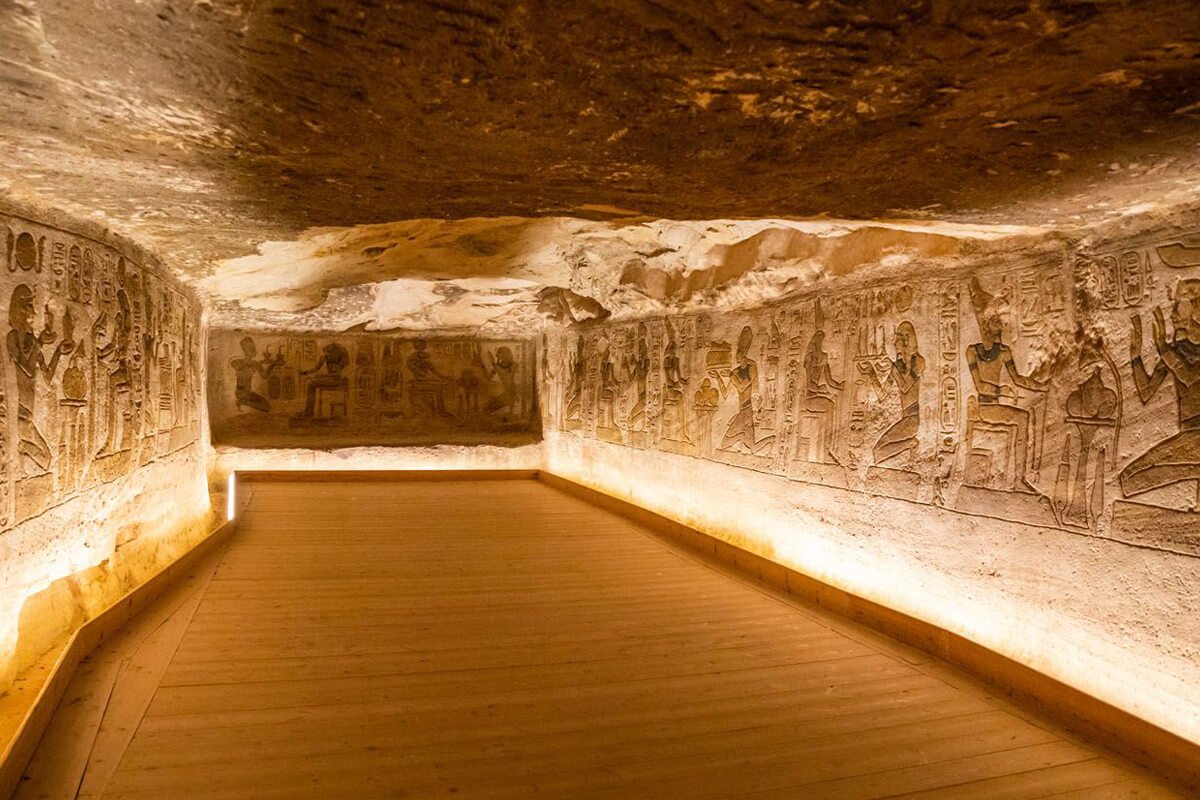
The Story Behind the Abu Simbel Temples
The Abu Simbel Temples, nestled in the southern part of Egypt on the banks of Lake Nasser, hold a fascinating story beyond their remarkable architecture. These temples were constructed during the reign of Pharaoh Ramses II, also known as Ramses the Great, in the 13th century BC.
The grand purpose behind their creation was to celebrate Ramses II’s victory over the Hittites at the Battle of Kadesh, one of the most significant battles in ancient Egyptian history. However, the true marvel lies in their relocation. In the 1960s, the temples faced submersion due to the construction of the Aswan High Dam.
In a remarkable feat of engineering and international cooperation, the temples were meticulously cut into blocks, relocated, and reassembled on higher ground to preserve them for future generations.
Description of the Temples’ Interior and Exterior
The Abu Simbel complex consists of the Great Temple of Ramses II and the smaller Temple of Hathor, dedicated to Ramses II’s beloved queen, Nefertari.
The Great Temple is a testament to Ramses II’s ego and power, with colossal statues of the pharaoh flanking the entrance. The impressive hall inside will astound you with its tall columns and intricate carvings showing the pharaoh’s military victories and divine connections.
The smaller Temple of Hathor, dedicated to the goddess of love and motherhood, is adorned with statues of Ramses II and Nefertari, showcasing their love and partnership. Both temples are decorated with mesmerizing hieroglyphics, paintings, and depictions of gods and pharaohs.
How to Reach Abu Simbel and the Best Time to Visit
Reaching Abu Simbel is an adventure in itself. The temples are located in a remote area, and the most common way to get there is by taking a domestic flight from Cairo or Aswan. The best time to visit is during the cooler months, from October to February, to avoid the scorching heat of the summer.
The Abu Simbel Sun Festival, occurring twice a year in February and October, is remarkable. On these specific dates, the sun’s rays penetrate the temple and illuminate the inner sanctum, casting a mesmerizing light on the statues, including the deity Ptah, except for the figure of the god Amun, symbolizing the king’s divinity.
The Egyptian Museum: Where Egypt’s History Comes to Life
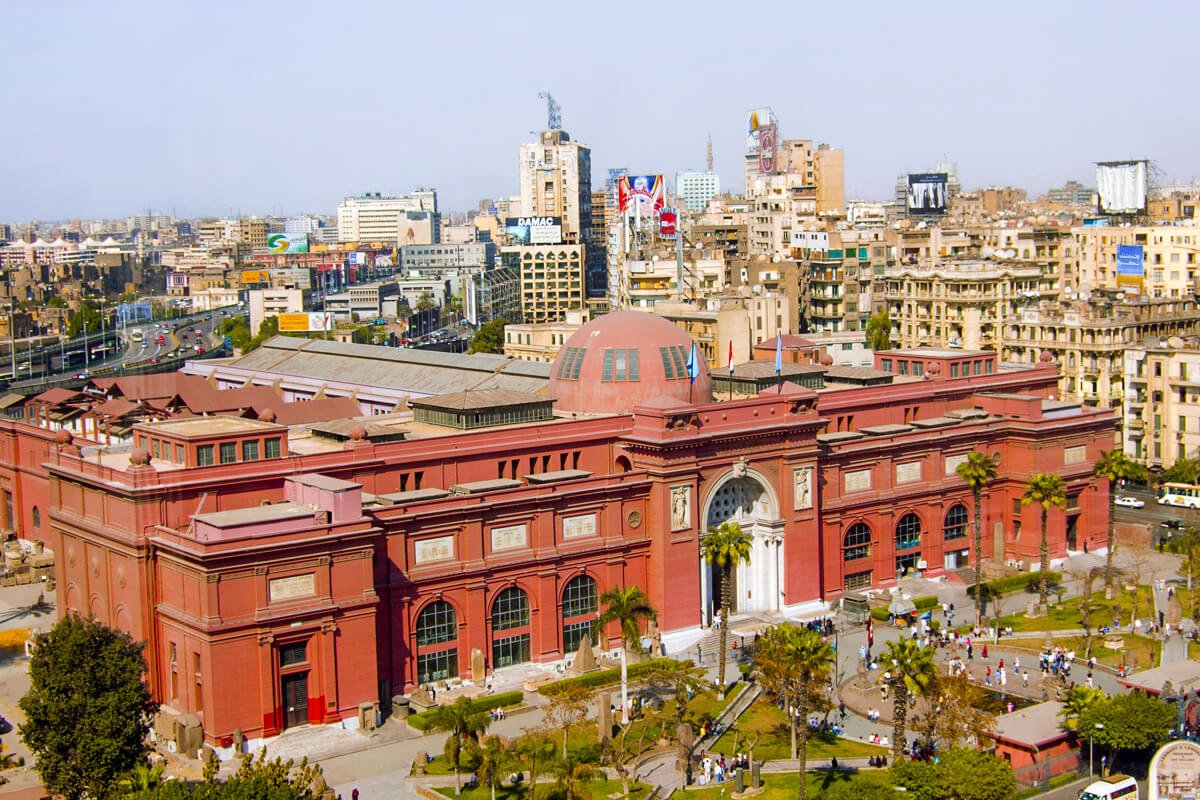
Historical Significance of the Museum
The Egyptian Museum in Cairo is a treasure trove of Egypt’s rich history, serving as a vital bridge between the past and the present. Its historical significance lies in the fact that it’s one of the world’s most comprehensive collections of ancient Egyptian artifacts, dating back thousands of years.
The museum was established in 1902 and has been a guardian of Egypt’s cultural heritage. With over 120,000 items, it’s a repository of mummies, sculptures, jewelry, and countless other relics that give us profound insights into the ancient Egyptians’ life, culture, and beliefs.
Walking through its halls is like returning to the days of pharaohs and pyramids. The museum is pivotal in preserving Egypt’s history and making it accessible worldwide.
Must-See Artifacts and Exhibitions
While it’s hard to pick just a few, there are some standout artifacts and exhibitions that you shouldn’t miss during your visit. The golden mask of Tutankhamun is perhaps the most iconic piece. This exquisite death mask, made of solid gold, adorned the young pharaoh’s mummy.
The royal mummies exhibit, featuring the remains of some of Egypt’s most illustrious rulers, is an extraordinary opportunity to meet face-to-face. The museum’s extensive collection of papyrus documents provides a glimpse into daily life, religion, and administration in ancient Egypt.
The treasures from the tomb of Tutankhamun are another must-see, displaying exquisite jewelry and furniture. And don’t forget to explore the mummy room, a spine-tingling experience where you can see remarkably well-preserved mummies of ancient Egyptians.
Luxor Temple: Ancient Splendor on the Nile
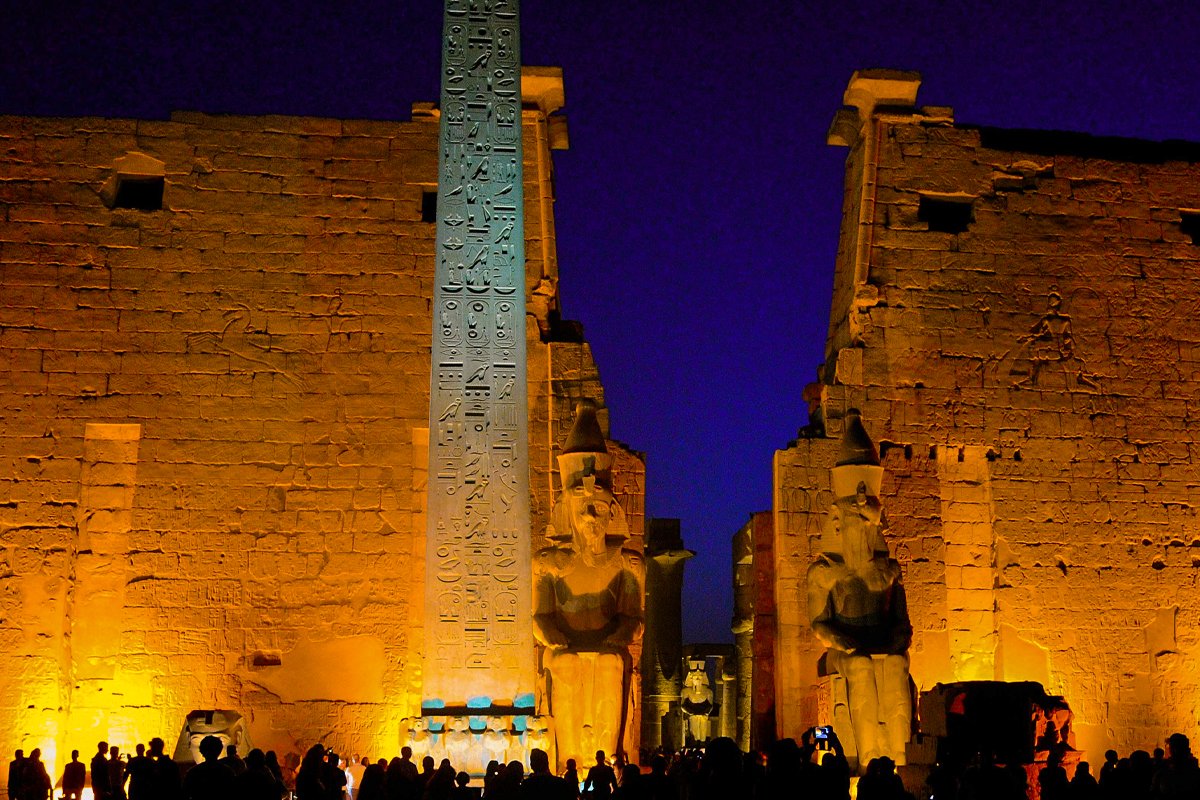
Overview of Luxor Temple’s Historical Importance
The Luxor Temple, located on the east bank of the Nile River in modern-day Luxor, is a remarkable testament to ancient Egypt’s rich history. It was constructed over centuries, with various pharaohs contributing to its expansion and transformation. This temple was primarily dedicated to the Theban Triad—the god Amun, his consort Mut, and their son Khonsu—making it a vital center for religious and political activities in ancient Thebes, present-day Luxor.
Luxor Temple’s historical significance is multifaceted. It served as a religious focal point, hosting grand festivals and rituals. It also bore witness to significant historical events, such as the rise of Amenhotep III and the renowned partnership between Akhenaten and Nefertiti. The temple played a role in Egypt’s transformation from a polytheistic to a monotheistic society during the reign of Akhenaten. It underwent multiple renovations and additions throughout its history, showcasing various artistic styles from different periods, making it a captivating snapshot of Egypt’s historical evolution.
Key Structures and Their Symbolism
The Luxor Temple is renowned for its iconic structures and symbolic elements. The Avenue of Sphinxes, a long path lined with sphinx statues, connected Luxor Temple with the Karnak Temple, serving as the route for grand religious processions. With its towering walls, the First Pylon symbolizes the threshold between the mundane world and the divine realm. Inside, you’ll find the Great Colonnade, a grand hall with colossal columns constructed during the reign of Amenhotep III.
It is dedicated to the god Amun and showcases intricate carvings that reveal the king’s divine connection. The Hypostyle Hall, with its stunning columns and decorations, emphasizes the importance of Amun and the religious order in ancient Egypt. The inner sanctum, the Holy of Holies, was a sacred space accessible only to the high priests, representing the most sacred connection with the gods.
Philae Temple: One of the most famous landmarks in Egypt in Aswan
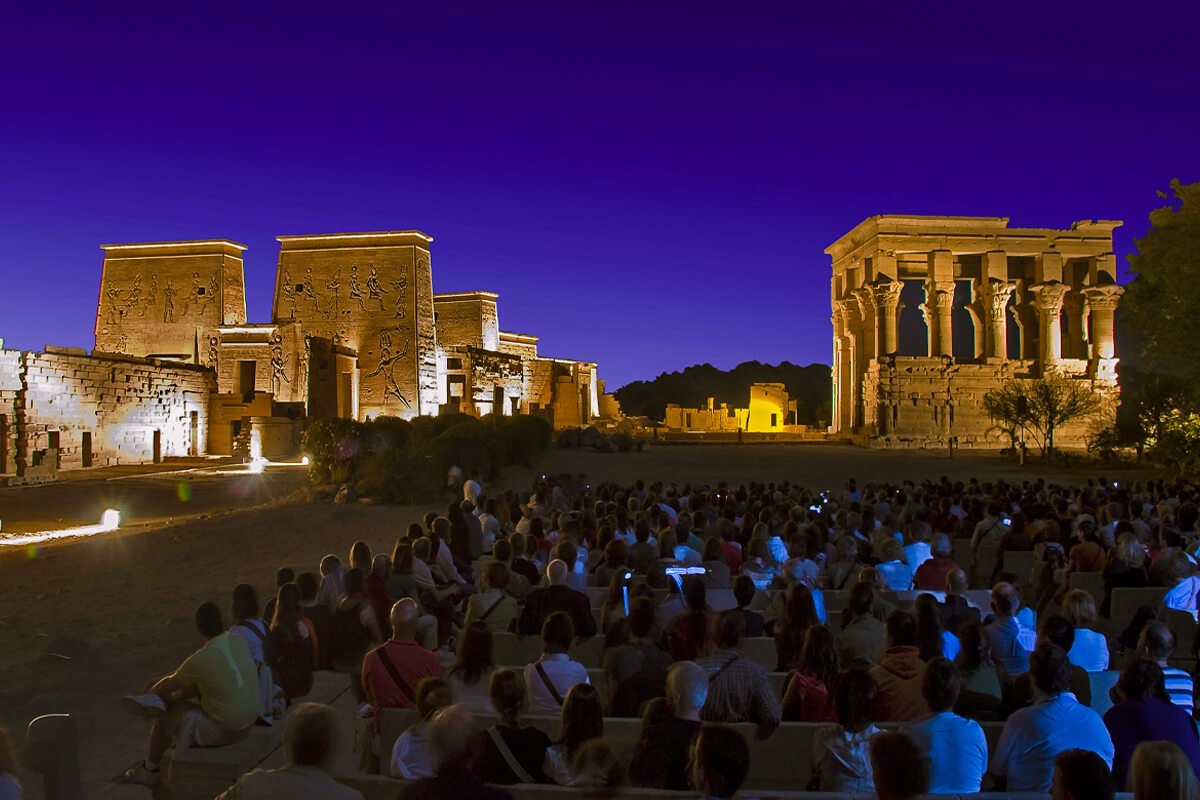
Introduction to the Island and Its Significance
Philae Temple, situated on the picturesque island of Philae, is a fascinating jewel along the Nile River. Historically known as ‘Pilak,’ the island held immense spiritual importance in ancient Egypt. It was dedicated to the goddess Isis and was regarded as one of the holiest sites in the country. Philae Island and its temple complex were the centers of the cult of Isis and Osiris, which played a crucial role in the spiritual landscape of ancient Egypt.
The island was said to be the last bastion of the ancient Egyptian religion when the world was transitioning towards Christianity. The temple’s significance lies in its architectural beauty and enduring role in Egyptian history and spirituality.
Detailed Description of the Temple Complex
The Philae Temple complex consists of various structures, with the main temple dedicated to the goddess Isis. Though smaller in scale compared to some of Egypt’s other grand temples, the temple is a work of art in its own right.
Its towers, courts, and halls are adorned with intricate carvings and hieroglyphics that narrate the mythological stories of the goddess Isis, her husband Osiris, and their son Horus. The inner sanctum, the holy of holies, housed the statue of Isis and served as a place of worship and pilgrimage for devotees. The island is a harmonious blend of natural beauty and human artistry, making it an enchanting destination.
Boat Tours to Philae Island
Access to Philae Island is typically through boat tours, which add an extra layer of adventure to your visit. You can embark on a serene journey across the tranquil waters of the Nile, taking in the scenic views of the riverbanks and the temples that appear to rise from the water.
The boat ride to Philae Island is an experience offering you a unique perspective on the beauty of the Nile and the surrounding landscape. Many tour operators offer guided boat tours to Philae Island, where you can learn about the temple’s history, significance, and the mythology surrounding the goddess Isis.
FAQs About Landmarks in Egypt
When were the Pyramids of Giza built?
The construction of the Pyramids of Giza began around 2580 BC and took several decades to complete.
How tall is the Sphinx?
The Sphinx stands approximately 66 feet (20 meters) tall and stretches over 240 feet (73 meters).
Can visitors enter the Valley of the Kings?
Visitors can explore several tombs in the Valley of the Kings, though not all are open to the public at any time.
What is the significance of the relocation of the Abu Simbel Temples?
After the Aswan High Dam was constructed, the temples were relocated to avoid submerging under Lake Nasser’s waters.
Is the Luxor Temple still used for religious ceremonies?
No, the Luxor Temple is no longer used for religious ceremonies and is primarily a tourist attraction.
Conclusion About landmarks in Egypt
Landmarks in Egypt are a testament to ancient civilizations’ unparalleled artistry and ingenuity. Each landmark in Egypt tells a story of a bygone era, from the mighty Pyramids of Giza to the tranquil Siwa Oasis. Unraveling these mysteries offers insight into the past and instills a deep appreciation for the cultural heritage that continues to captivate the world.



